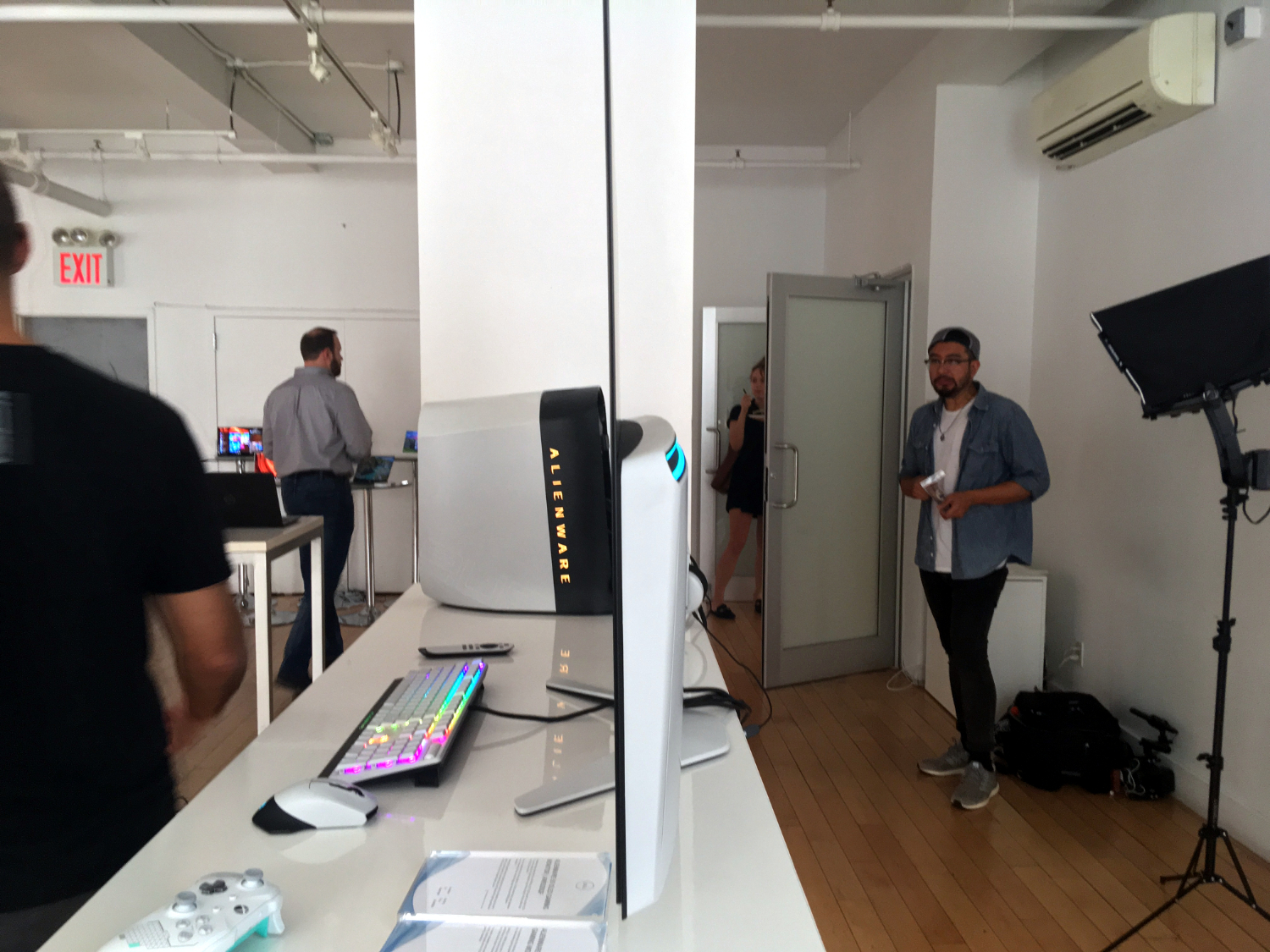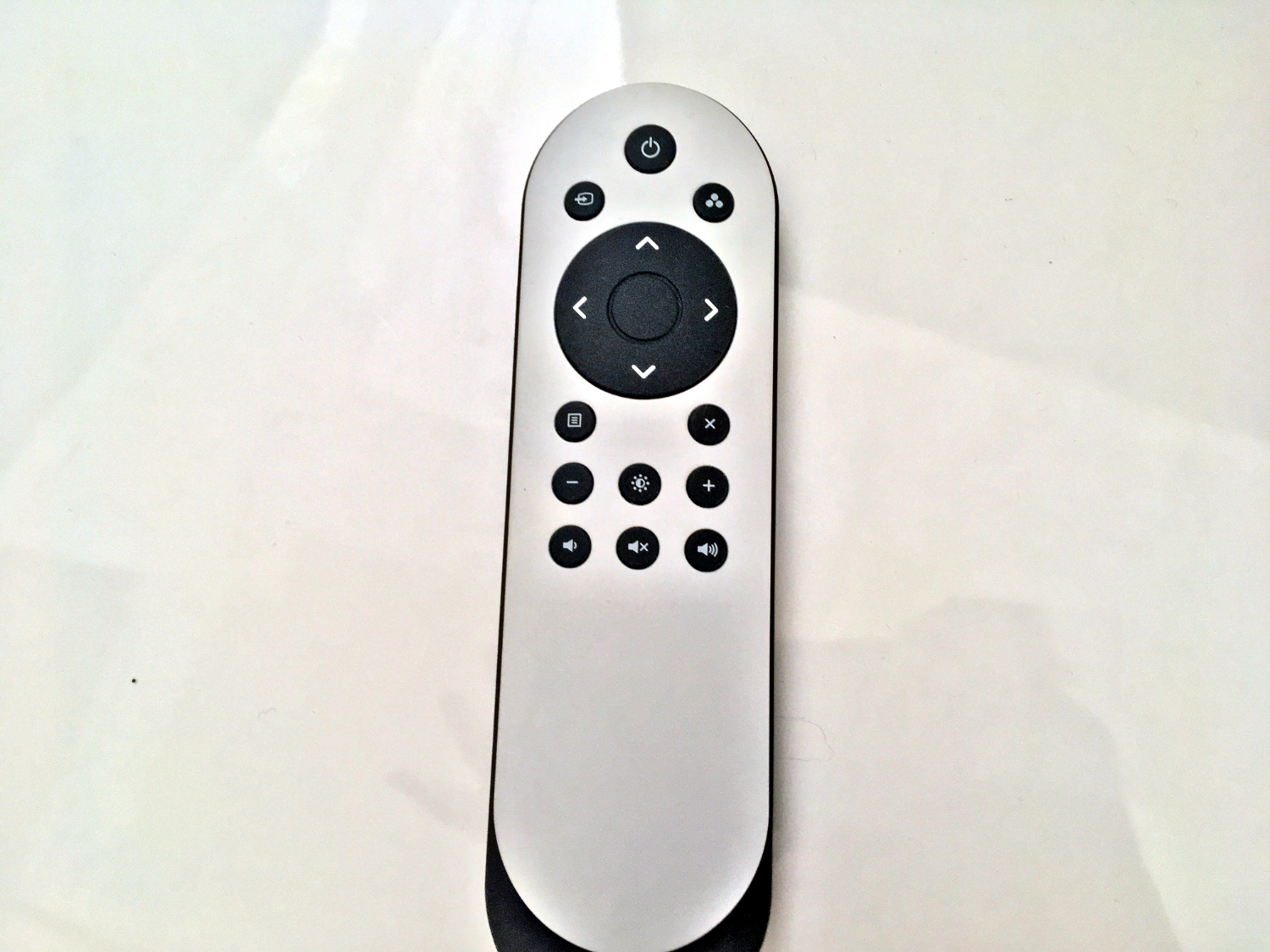Alienware Makes OLED 4K Gaming Dreams a 120 Hz Reality on Sept 30
OLED panels put LED ones to shame with top-grade contrast levels that produce brilliant, eye-popping color. That’s why it’s getting increasing popular in TVs, and we’re even seeing more laptops boast OLED.
But for gamers committed to the monitor lifestyle, the panel choices are primarily limited to IPS, TN or VA, with the latter being your best bet for high contrast. But that’ll change September 30, when Alienware’s one-of-a-kind OLED monitor hit retailers in a 55-inch, 4K resolution package for $3,999.99.
We got to see the Alienware AW5520QF play The Elder Scrolls Online off a gaming desktop running an AMD Radeon 5700XT graphics cards. Brighter colors, like green trees and purple flowers, were striking. In the nighttime scene, even dark hues, like the architecture or rich indigo sky, weren’t lost, instead mesmerizing with a show of their own. That’s just a taste of why color fanatics go nuts for OLED.


Good color isn’t limited to the screen. Around back, the monitor has an RGB alien head and strip that you can customize in the AlienFX software, but they have to be the same color.
But more impressive than RGB you’ll rarely look at (unless you go through the effort of VESA mounting this monstrosity on your hopefully solid walls) is the cable management system. The back has a pop-off cover that hides a tunnel for keeping things tidy.
Yes, It’s Real
We first saw the AW5520QF in January at the CES trade show. But in general, it’s not uncommon for products showcased at CES to never hit the market. And some reports even claimed that the release of this monitor was unlikely. But the Alienware OLED monitor is definitely hitting stores in all its inky-black glory this fall. In fact, it'll be $1,500 less than Dell originally estimated, the company told us.
Native contrast is listed as 130,000:1. Considering the highest contrast on our best 4K gaming monitors page is the Philips 436M6 Momentum at 4,000:1, that’s pretty mind-boggling. Dell decided to forgo HDR support, but the AW5520QF covers 98.5% of the DCI-P3 color gamut and hits up to 400 nits brightness.
Get Tom's Hardware's best news and in-depth reviews, straight to your inbox.
And it’s not just a pretty face--it’s a speed demon too. Despite its high resolution, it sports a 120 Hz refresh rate, plus a 0.5ms response time (GTG) and FreeSync.
For $$3,999.99, you better get all the ports you can want. Dell made a good effort by including (dispersed throughout the back and left side) DisplayPort 1.2, three HDMI 2.0 ports, four USB ports, S/PDIF audio line-out and a headphone jack. There are also two 14W speakers.


With its 54.6-inch viewable screen size and a surprisingly thin profile, I can easily see this monitor sitting where my 55-inch TV currently does in my living room. It doesn’t have a tuner, but at least there’s a remote. On the other hand, we're curious to see how working in Windows 10 looks, considering the relatively low 81ppi pixel density, and if tweaking font scaling will be required.
The AW5520QF arrives in the U.S. on September 30 and in EMEA on October 30.
But if you’re looking for something a bit more, shall we say, attainable, Dell also announced three more gaming monitors today:
- Alienware AW2720HF ($599.99, September 17): 27-inch IPS panel with 1080p resolution, a 240 Hz refresh rate and FreeSync
- Dell S3220DGF (August 28, $599.99): curved 32-inch VA panel with QHD resolution, 165 Hz and FreeSync.
- Alienware AW3420DW (August 28, $1,499.99): curved 34-inch IPS with QHD resolution, 165 Hz and FreeSync 2 (works with HDR).
Photo Credits: Tom's Hardware

Scharon Harding has over a decade of experience reporting on technology with a special affinity for gaming peripherals (especially monitors), laptops, and virtual reality. Previously, she covered business technology, including hardware, software, cyber security, cloud, and other IT happenings, at Channelnomics, with bylines at CRN UK.
-
Xenophage How do you forego HDR support on an OLED? With that contrast ratio there's no excuse. HDR is supported on my much cheaper, larger LG OLED TV.Reply -
jacoro1 Reply
Yeah that's a confusing decision. I don't see how they are going to sell many of these. I'm using a 9 series LG OLED as well. They can be had for $1600 now, support HDR, and will switch to 1440p at 120hz for games quite nicely. As soon as the new Realtek DP to HDMI 2.1 adapters or GPUs with HDMI 2.1 support are available it will do 4k at 120hz also.Xenophage said:How do you forego HDR support on an OLED? With that contrast ratio there's no excuse. HDR is supported on my much cheaper, larger LG OLED TV. -
mihen I think they might have went with 400 nits in order to prevent burn in. A monitor is probably going to have a static screen for hours every dayReply -
knekker 2 important questions:Reply
1. I see no mention of supporting sRGB colorspace, if not that will display most websites which contains jpg pictures, make the colors look wierd.
2. why only support display port 1.2, is that enough bandwith to support 10 bit uncompressed colors at 4:4:4? I don't want compressed innacurate colors for this price tag. -
dannyboy3210 There may be a word missing:Reply
"In fact, it'll be $1,500 than Dell originally estimated, the company told us." -
tharkis842 Uhhm..why not just buy the newer LG C9 series tv instead? HDR, 120hz, hdmi 2.1 support..sure VRR is a bit iffy, but the LG is also like..$1600 on sale, and available now. Also, if you don't have a soundbar/audio setup, the sound on these tv's is pretty decent.Reply -
lilkwarrior The management that decided to make the decisions associated with the monitor failed the use of the OLED monitor.Reply
I'm pretty certain they have no clue or misconstrued what a prospective buyer of such a monitor actually wants or had abysmal competitive analysis sessions to forgo both HDR & HDMI 2.1. No HDR & HDMI 2.1 when prospective buyers would compare this monitor & LG's 2019 OLED HDMI 2.1 4K@120hz Dolby Vision HD4 TVs was inexcusable—especially when you're asking almost triple (2.6) times more money than those devices.
Xbox One X—as well as the publicly disclosed capabilities of both Microsoft's & Sony's next gen consoles (4K@120hz)—& the best-selling OLED TVs in 2019 leverages HDMI 2.1. Accordingly, for a product oriented for gamers, it was questionable for them to drop HDMI 2.1 w/o at minimum VRR, QuickSync, Auto Low Latency Mode (ALLM), & arguably eArc.
Furthermore, forgoing G-Sync was also a crucial error on their part; an overwhelming majority of gamers who have GPUs powerful enough to leverage this monitors capabilities are Nvidia users. Therefore, it should have been discovered during the market analysis phase to have G-Sync compatibility.
Overall, it seems management or the staff allocated to this product failed to make most of the investment in resources management provided them to realize a product a majority of the audience for the product will not want vs. what promise it had before.
It has a hard time being justifiable over waiting till next year or enthusiasts repurposing a LG C9 for their big screen PC gaming needs for 2.6 times cheaper. -
lilkwarrior Reply
Dell confirmed they made a typo; this monitor has DisplayPort 1.4knekker said:2 important questions:
1. I see no mention of supporting sRGB colorspace, if not that will display most websites which contains jpg pictures, make the colors look wierd.
2. why only support display port 1.2, is that enough bandwith to support 10 bit uncompressed colors at 4:4:4? I don't want compressed innacurate colors for this price tag. -
mihen I don't think Adaptive sync is necessary for OLED. The screens are capable of a 0.001ms refresh rate. It's mostly limited to the cable and post processing by the tv.Reply
